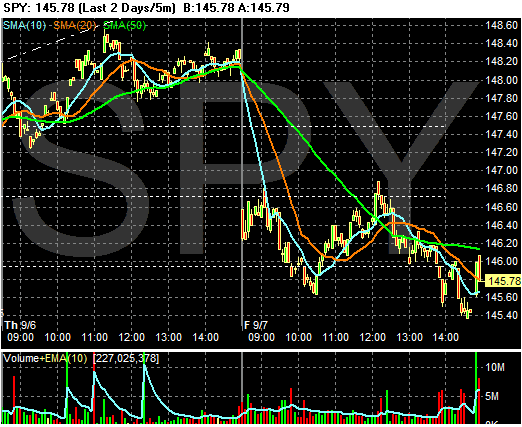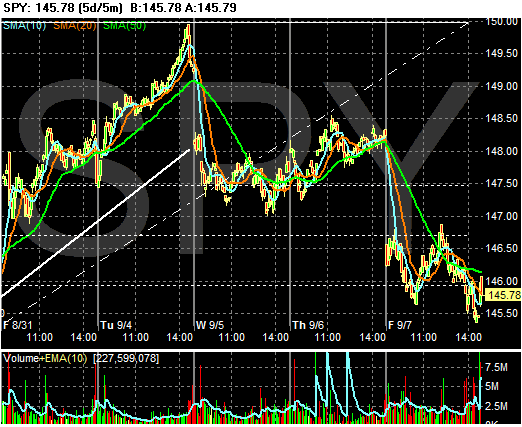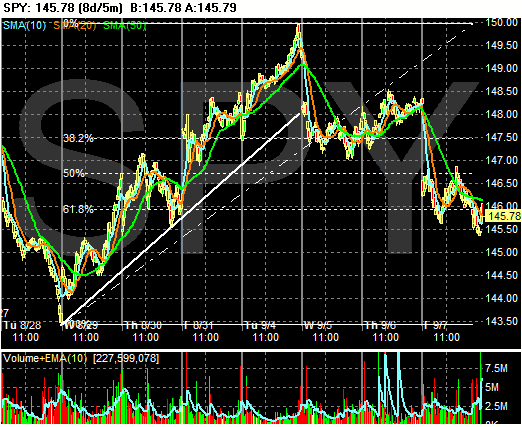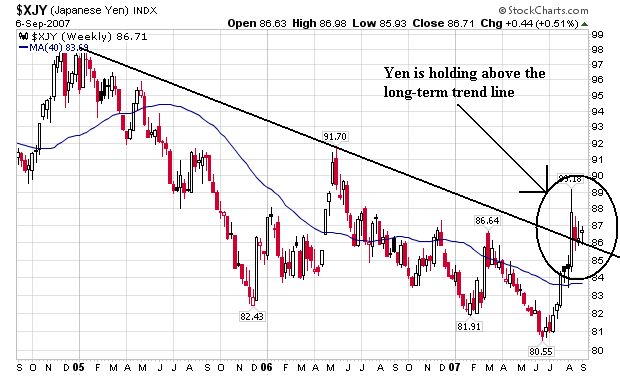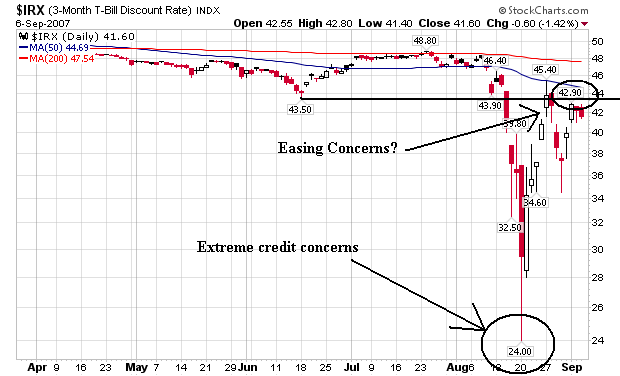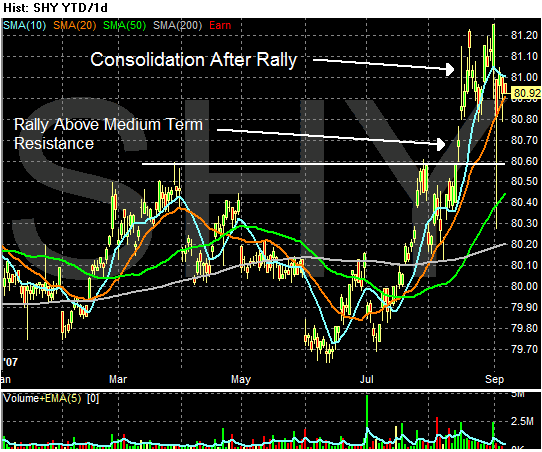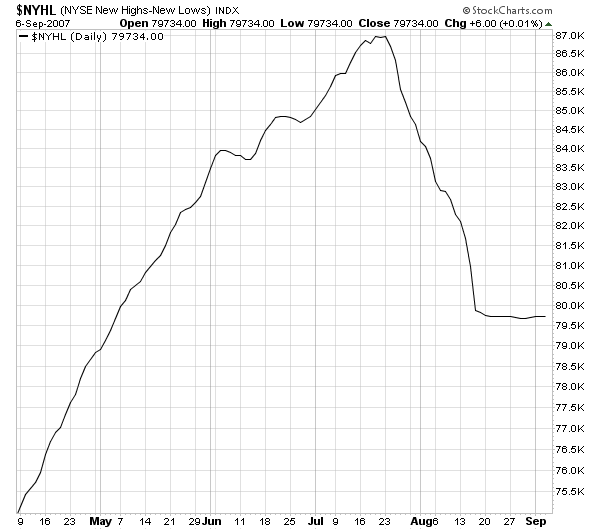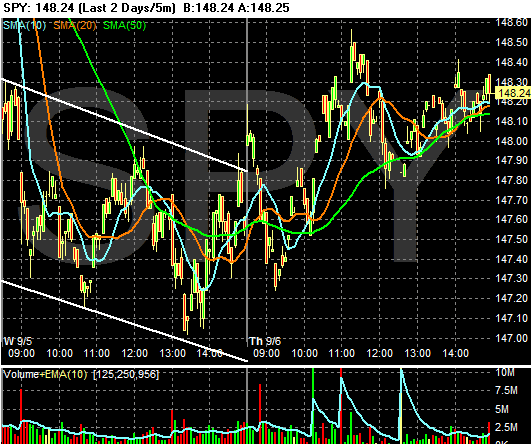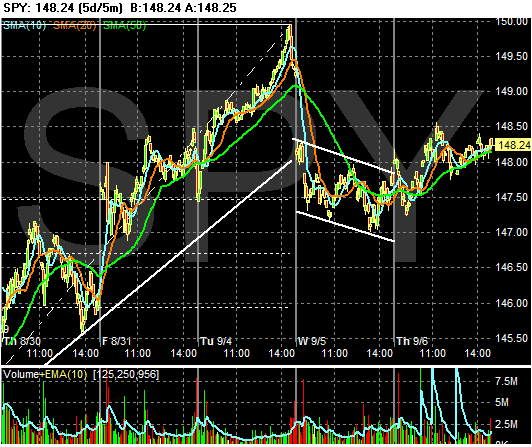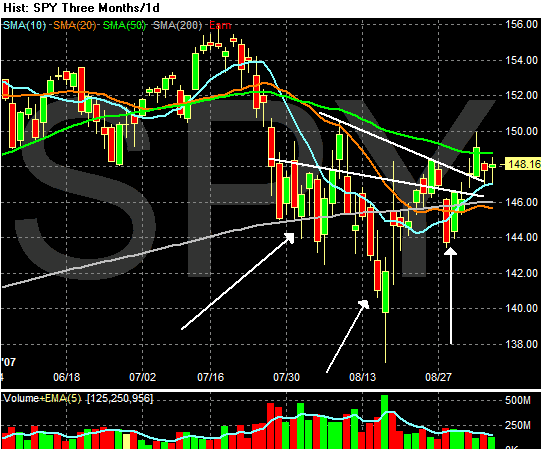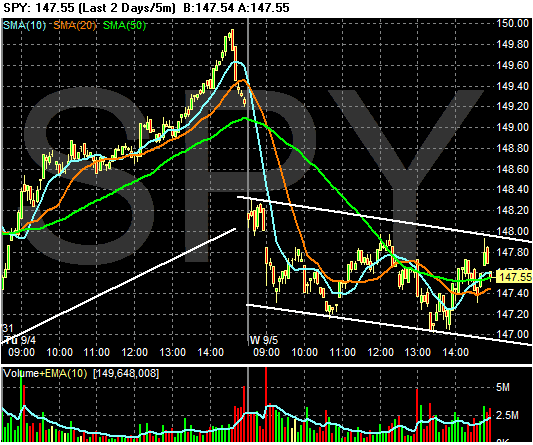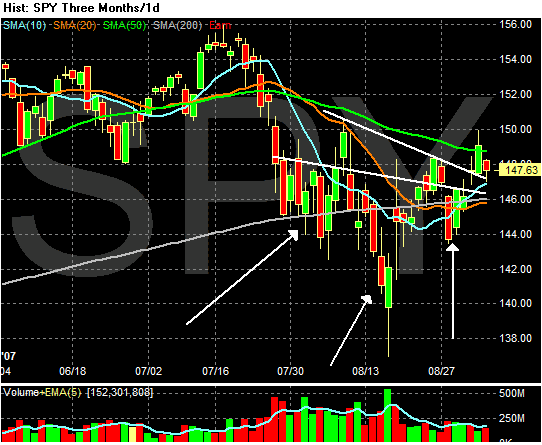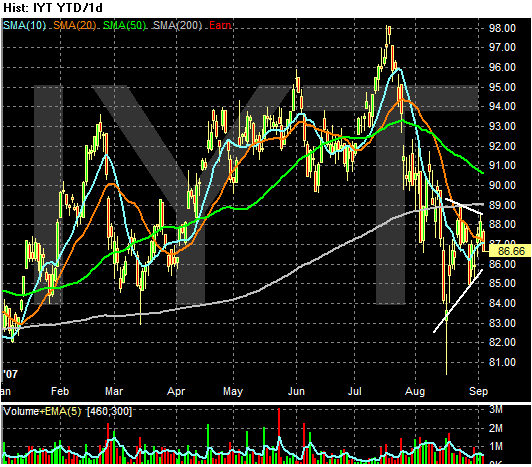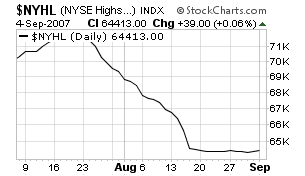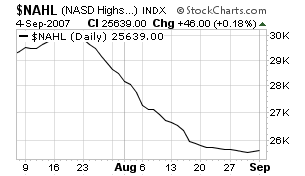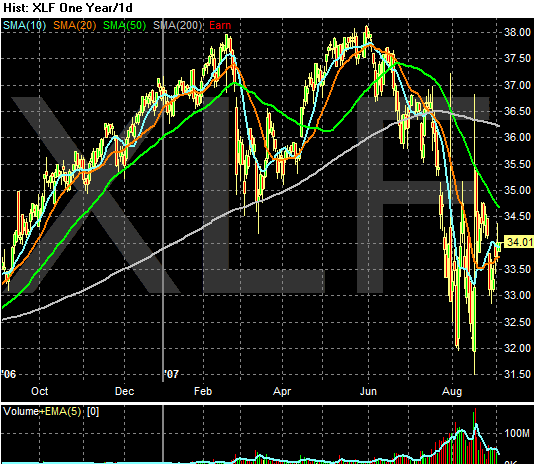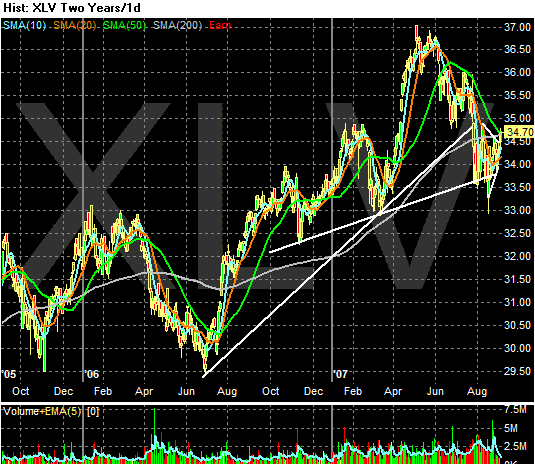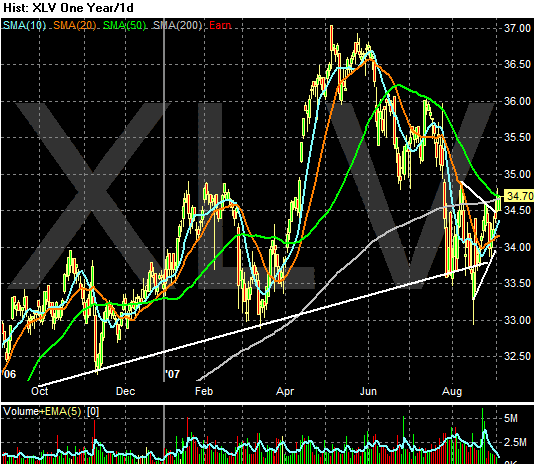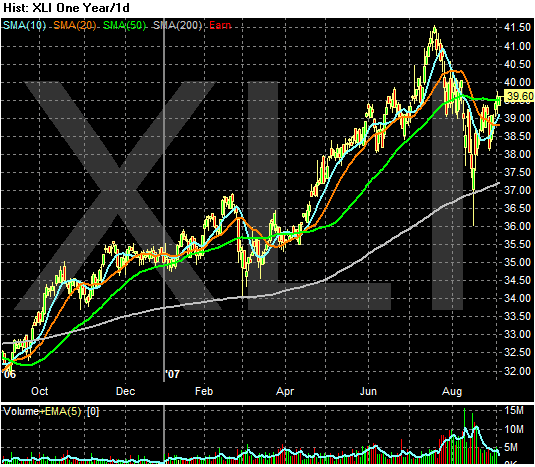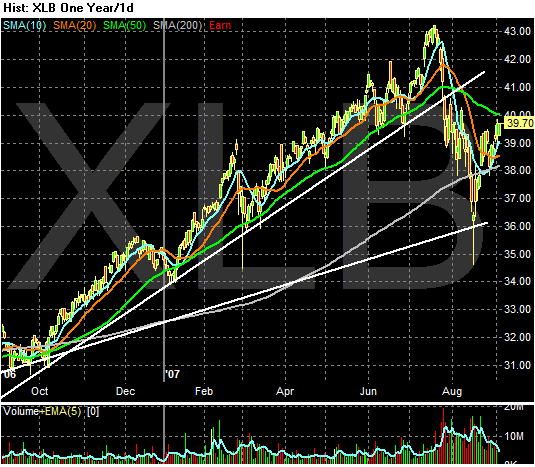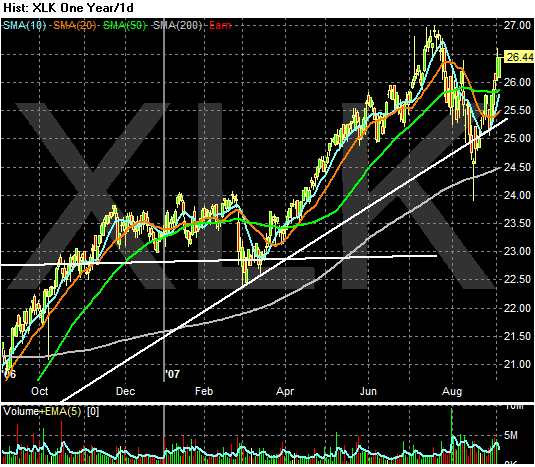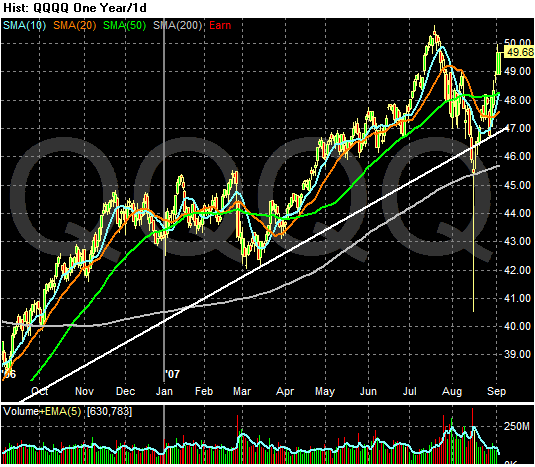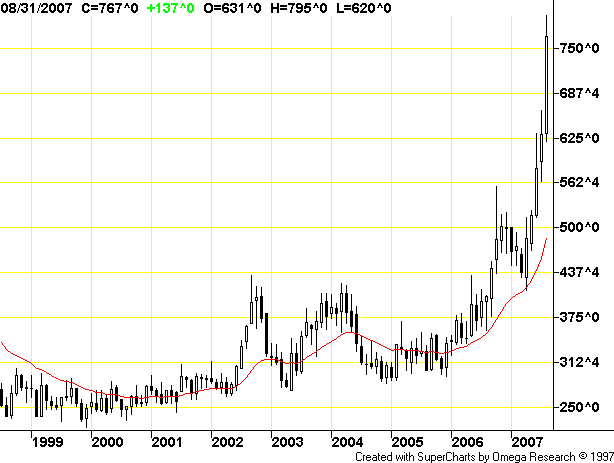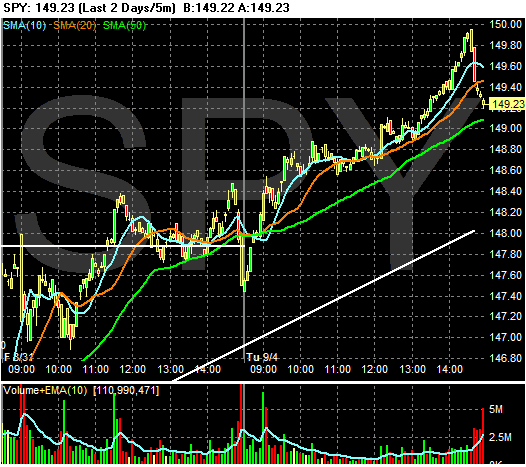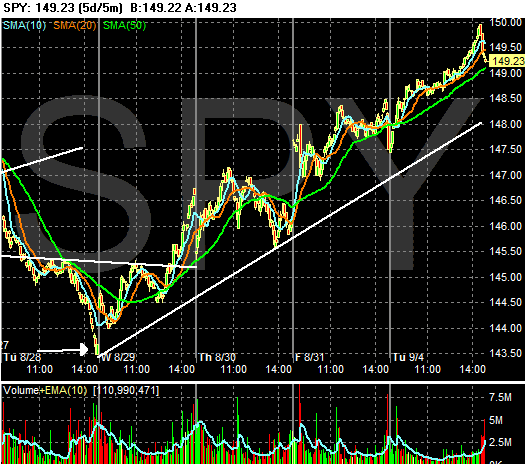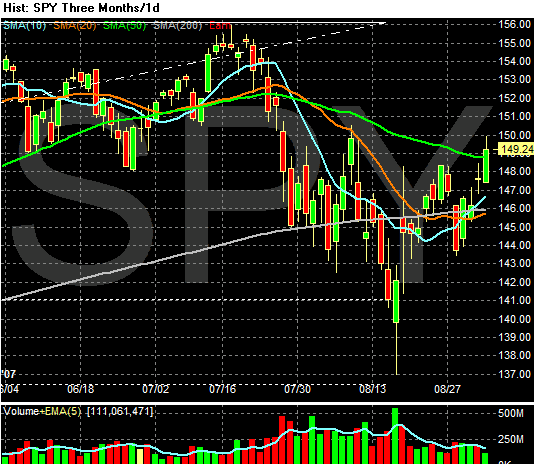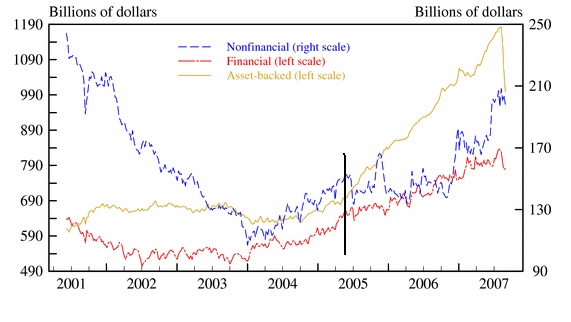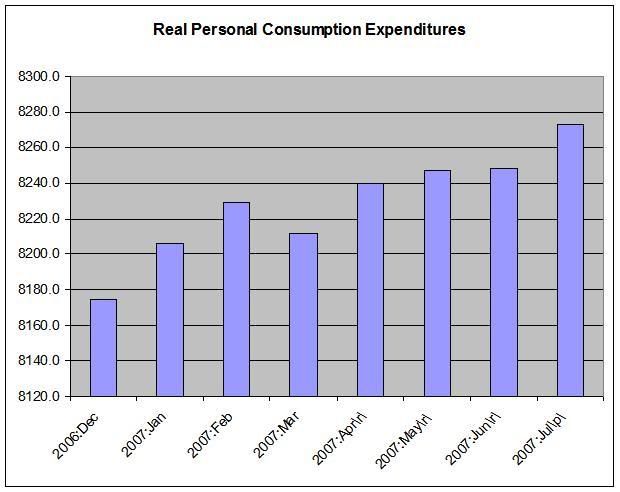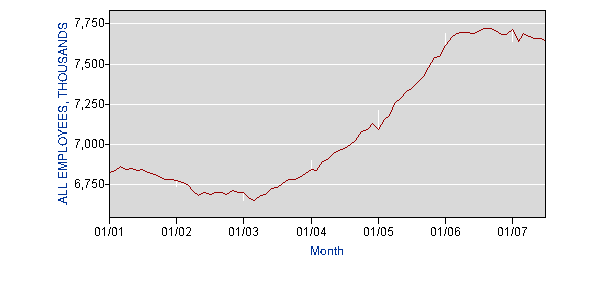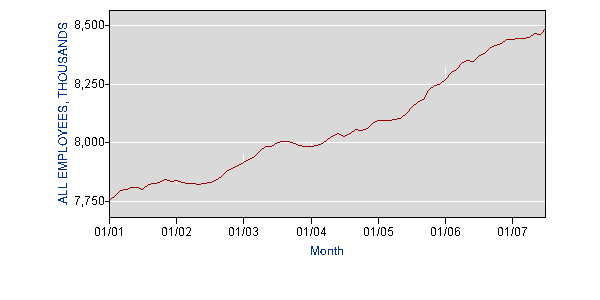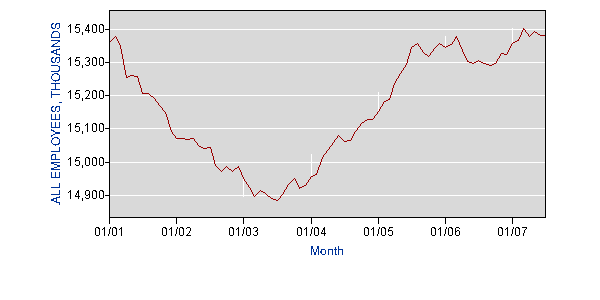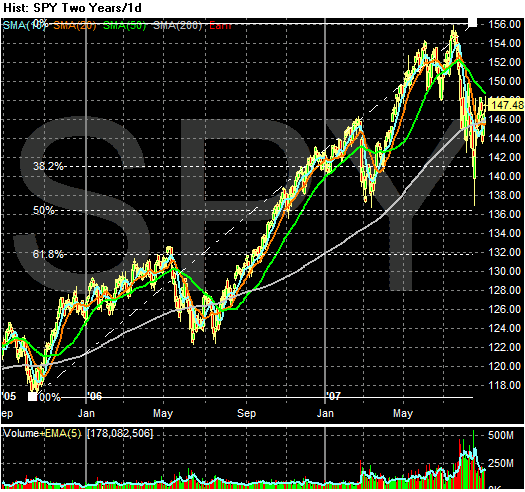Then came the employment report. It wasn't just bad. It stunk. Mish completely takes it apart. He and I are in complete agreement on what this report said: This jobs report was nothing short of a disaster. In short, this wasn't just weak enough to add credence to a rate cut scenario. It increased talk of an outright recession. That is a development I wasn't expecting and that is the reason for the heavy action yesterday.
I will add in my own defense that I have consistently put up the NYSE and NASDAQ new highs/new lows chart from stockcharts.com and mentioned they indicate the uptrend isn't that strong (see this post). And I also mentioned the transportation average was not confirming the rally along with another mention of the weak high/low average here. This demonstrates that while I was short-term bullish I was still not completely sold on my own idea.
However, let's look at a broader idea I mentioned in this article -- that the idea of a rate cut has put a floor under the market.
Here's a daily chart of the SPYs:
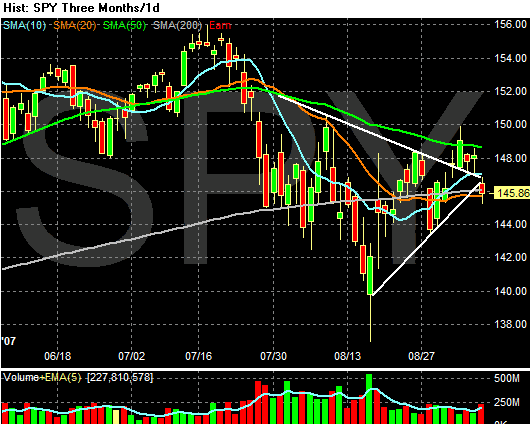
As I mentioned below, yesterday's action did a great deal of technical damage. First, it broke the uptrend the market started in late July. Trends are very important in the market. Traders will follow them irrespective of the underlying market conditions. If the market is moving in one direction, traders will simply stare at their screens, block out any contrary information, and keep making bets in the trends direction. That's how market work. Yesterday's action ruined a few weeks long trend.
In addition, it took out the theory of the market consolidating in a head and shoulders formation and rallying on rate cut events. With yesterday's close breaking the neck line the possibility of a higher move are greatly diminished.
All that being said -- what is the downside risk right now? First, there is a ton of technical traffic in the $144-$148 area. The market has to move through this area convincingly before another serious downside move. There is also the issue of the 200 day SMA, which has acted like a center of gravity for the market for the last month. While the market hasn't moved convincingly higher over the 200 day SMA, it has not moved convincingly lower either. That tells me the jury is definitely still out regrading the downside risk. Then there is the issue of overall valuation. According to Barron's The Dow's PE is 15.73 and the S&P's is 17.08. While these aren't cheap, they certainly aren't expensive either. In other words, traders aren't going to sell based on the theory the market is really expensive.
Then there is the Fed. The market is expecting a rate cut in September, and the jobs report adds a great deal of credence to that expectation. I would add a word of caution that last week four Fed governors gave speeches that did not telegraph a 100% possibility of a rate cut. I work on the assumption that Fed officials have advanced economic information, meaning they probably knew about the jobs report when they gave their speeches. However, despite these speeches, I would not be surprised to see the Fed cut rates later this month.
However, I think the market is now moving into a different thought pattern. The jobs report increased talk of a recession. And the market may now be really on edge as it awaits more data that either confirms or denies that possibility. Until there is a firm idea as to which way the underlying economy is going I would expect the market to remain very weak, but not weak enough to send the market into a complete meltdown. Therefore, I think the market is going to move back into a very neutral stance where the 200 day SMA is the big trendline to watch.
Now that I've said that, I'm sure the market will again make an ass out og me within the next few weeks.
